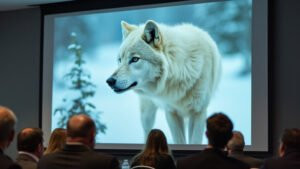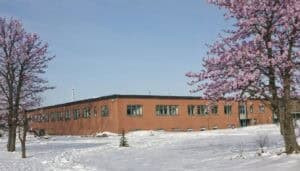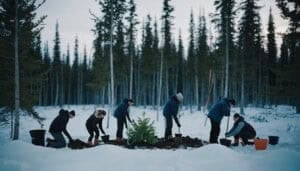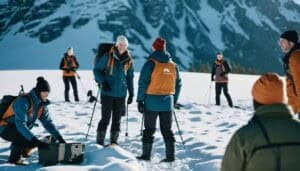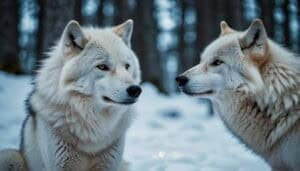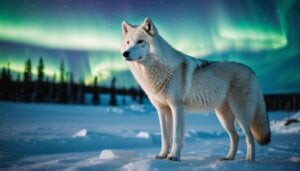Introduction
Community-led Arctic wolf conservation projects are critical for preserving these majestic predators in their natural habitat. These initiatives focus on empowering local communities, implementing sustainable strategies, and leveraging indigenous knowledge to achieve conservation goals
This article delves into the objectives, contributions, strategies, and challenges of such projects, showcasing successful case studies and the importance of educational and collaborative efforts in ensuring the long-term survival of Arctic wolves
Goals and Contributions of Community-Led Conservation Projects
Community-led Arctic wolf conservation projects aim to protect and sustain wolf populations while empowering local communities. By leveraging local knowledge and involving community members in conservation efforts, these projects achieve multiple objectives that benefit both wildlife and people
Conservation and Preservation Objectives
The primary goal of community-led conservation projects is to preserve Arctic wolf populations and their natural habitats
These objectives often include:
Population Monitoring: Regular tracking of wolf populations to assess their numbers, health, and movements. For example, community members in Greenland monitor wolf packs to gather data on birth rates and survival rates
Habitat Protection: Ensuring that the habitats of Arctic wolves remain intact and free from human disturbances. This includes safeguarding denning sites and feeding grounds
Biodiversity Enhancement: Promoting overall biodiversity in the Arctic regions by protecting the ecosystems that Arctic wolves are a part of. This holistic approach helps maintain a balanced environment where wolves and other species can thrive
Enhancing Biodiversity in Arctic Regions
Arctic wolves are apex predators, playing a crucial role in maintaining the ecological balance
Community-led projects contribute to biodiversity in several ways:
Predator-Prey Balance: By preserving wolf populations, these projects help control the populations of prey species such as caribou and Arctic hares, preventing overgrazing and ensuring vegetation health
Ecosystem Health: Wolves influence the behavior of other animals, which in turn affects plant communities and overall ecosystem dynamics. For instance, the presence of wolves can lead to healthier riparian zones by reducing overbrowsing by herbivores
Species Interaction: Conservation efforts often focus on the interactions between wolves and other species, promoting a more diverse and resilient ecosystem
Community Empowerment and Education
Empowering local communities is a cornerstone of successful conservation projects
This empowerment manifests in various forms:
Employment Opportunities: Conservation projects create jobs for local residents, ranging from trackers and researchers to educators and conservation officers. For example, in Nunavut, community members are employed to monitor wolf packs and gather crucial data
Educational Programs: Educational initiatives aim to raise awareness about the importance of Arctic wolves and conservation efforts. These programs often include workshops, school programs, and public seminars. In the Yukon Territory, schools incorporate conservation education into their curriculum, fostering a sense of responsibility among the youth
Cultural Preservation: Many Arctic communities have deep-rooted cultural connections to wolves. Conservation projects often integrate traditional ecological knowledge, ensuring that cultural practices are respected and preserved. Indigenous knowledge about wolf behavior and habitat use is invaluable in designing effective conservation strategies
Monitoring and Tracking Wolf Populations
Monitoring and tracking are critical components of community-led conservation efforts
These activities involve:
Field Surveys: Community members conduct regular field surveys to observe wolf packs, record their numbers, and note any changes in their behavior or health. This data is essential for understanding population dynamics and identifying potential threats
Technology Integration: The use of GPS collars and camera traps has revolutionized wolf tracking. Local trackers are trained to deploy and maintain these technologies, providing accurate and real-time data on wolf movements and interactions
Citizen Science: Engaging community members in citizen science initiatives allows for broader data collection and fosters a sense of ownership in conservation efforts. Residents contribute observations and data through apps and online platforms, enhancing the overall understanding of wolf populations
Habitat Restoration and Management
Restoring and managing habitats are vital for the survival of Arctic wolves
Community-led projects focus on:
Rehabilitation of Degraded Areas: Efforts include reforestation, removal of invasive species, and restoration of natural water sources. For instance, in some Arctic regions, communities plant native vegetation to restore habitats damaged by human activities
Protection of Critical Habitats: Ensuring that key areas such as breeding sites and hunting grounds are protected from development and disturbance. Community-led initiatives often work with local authorities to designate protected areas and enforce regulations
Sustainable Land Use: Promoting sustainable land use practices that minimize habitat destruction. This includes advocating for responsible tourism and preventing overgrazing by livestock. Collaborative efforts between conservationists and local herders help balance economic needs with conservation goals
Community-Based Research and Data Collection
Community involvement in research and data collection enhances the effectiveness of conservation projects
Key aspects include:
Participatory Research: Engaging local residents in designing and conducting research ensures that studies are relevant and grounded in local realities. This participatory approach leads to more accurate data and better-informed conservation strategies
Data Sharing and Collaboration: Sharing research findings with the community fosters transparency and encourages collaborative problem-solving. Regular meetings and reports keep everyone informed and involved in the conservation process
Capacity Building: Training community members in scientific methods and data collection techniques builds local capacity and expertise. This not only improves the quality of data but also empowers residents to take an active role in conservation
By addressing these goals and leveraging the contributions of local communities, community-led Arctic wolf conservation projects achieve sustainable and impactful outcomes
These efforts not only protect Arctic wolves but also enhance the well-being of the communities that coexist with them
Strategies and Examples of Successful Conservation Projects
Community-led conservation projects employ a variety of strategies to ensure the protection and sustainability of Arctic wolf populations. These strategies often combine traditional knowledge with modern technology and scientific methods
Sustainable Land Use Practices
One of the key strategies in Arctic wolf conservation is promoting sustainable land use practices:
Rotational Grazing: Implementing rotational grazing practices helps prevent overgrazing, which can degrade the habitat necessary for the prey species that wolves rely on. In areas like the Yukon Territory, herders collaborate with conservationists to establish grazing schedules that maintain vegetation health
Conservation Easements: Establishing conservation easements involves legal agreements that restrict certain types of development on private lands. These easements are crucial in protecting large tracts of habitat that are essential for wolf populations
Eco-Friendly Tourism: Promoting eco-tourism provides economic benefits to local communities while minimizing environmental impact. Tourist activities are designed to be non-intrusive, ensuring that wolf habitats remain undisturbed
Anti-Poaching Measures
Anti-poaching measures are essential to protect Arctic wolves from illegal hunting and trapping:
Patrols and Surveillance: Community members participate in regular patrols to monitor for illegal activities. These patrols are often equipped with drones and other surveillance technologies to cover larger areas efficiently
Legal Enforcement: Strengthening legal frameworks and ensuring strict enforcement of wildlife protection laws help deter poaching. Conservation projects work closely with local and national authorities to prosecute offenders and impose penalties
Awareness Campaigns: Educating the public about the legal and ecological consequences of poaching reduces support for such activities. Campaigns highlight the importance of wolves in the ecosystem and the benefits of their conservation
Use of Technology in Conservation Efforts
Technological advancements play a significant role in modern conservation efforts:
GPS Tracking Collars: GPS collars provide precise data on wolf movements and behavior. This information helps conservationists understand habitat use patterns and identify critical areas for protection
Camera Traps: Camera traps set up in strategic locations capture images and videos of wolves in their natural habitat. These traps offer valuable insights into wolf behavior and population dynamics without human interference
Data Analytics: Advanced data analytics and machine learning algorithms analyze large datasets from GPS collars and camera traps. These analyses help predict trends and assess the impact of conservation strategies
Case Study: Nunavut Community Project
The Nunavut Community Project is a prime example of successful community-led conservation:
Community Involvement: Local Inuit communities play a central role in monitoring and protecting wolf populations. Their traditional knowledge and tracking skills are invaluable for understanding wolf behavior
Collaborative Research: The project involves collaboration between local communities, universities, and conservation organizations. Joint research initiatives focus on studying wolf-prey dynamics and the impact of climate change on wolf habitats
Education and Outreach: Educational programs in schools and community centers raise awareness about the importance of wolves and conservation efforts. Workshops and seminars engage community members in ongoing conservation activities
Case Study: Yukon Territory Initiative
The Yukon Territory Initiative showcases effective strategies and community engagement:
Sustainable Practices: Local herders adopt rotational grazing and other sustainable land use practices to protect wolf habitats. Conservationists provide training and support to ensure these practices are implemented effectively
Anti-Poaching Efforts: Community patrols, supported by advanced surveillance technologies, have significantly reduced poaching incidents. The initiative also works closely with law enforcement agencies to ensure legal protection for wolves
Technology Integration: The use of GPS tracking collars and camera traps has provided detailed data on wolf populations. This data informs management decisions and helps identify areas that require additional protection
Case Study: Greenland Wolf Conservation Efforts
Greenland’s community-led conservation efforts have made notable progress in protecting Arctic wolves:
Habitat Restoration: Community members engage in habitat restoration activities, such as planting native vegetation and rehabilitating degraded areas. These efforts improve habitat quality for both wolves and their prey
Research and Monitoring: Collaborative research projects involve local residents in tracking and studying wolf populations. Data collected through these efforts enhances the understanding of wolf ecology and informs conservation strategies
Cultural Integration: Conservation projects respect and integrate traditional ecological knowledge. Indigenous practices and cultural values are central to the conservation efforts, ensuring community support and participation
Challenges and Evaluations of Conservation Efforts
Despite their successes, community-led Arctic wolf conservation projects face several challenges that require ongoing evaluation and adaptation
Environmental and Climate Challenges
The Arctic environment presents unique challenges for conservation:
Climate Change: Rapid climate change in the Arctic affects the availability of prey and alters habitats, making it difficult for wolves to survive. Melting ice and changing vegetation patterns disrupt the ecological balance
Extreme Weather: Harsh weather conditions can hinder monitoring efforts and make it difficult for community members to conduct field surveys. Conservation projects must adapt to these conditions by developing resilient strategies
Habitat Fragmentation: Human activities, such as mining and infrastructure development, lead to habitat fragmentation. Conservation efforts must address these impacts by promoting habitat connectivity and protecting critical areas
Socio-Economic Barriers
Socio-economic factors can impede conservation efforts:
Funding Limitations: Securing consistent funding is a significant challenge for many community-led projects. Limited financial resources can restrict the scope and effectiveness of conservation activities
Economic Pressures: Communities that rely on hunting and trapping for their livelihoods may face conflicts between conservation goals and economic needs. Projects must balance conservation efforts with providing alternative income sources
Resource Allocation: Effective resource allocation is crucial for maximizing conservation impact. Projects need to prioritize activities and manage resources efficiently to achieve their objectives
Political and Legal Obstacles
Political and legal frameworks can influence conservation outcomes:
Regulatory Hurdles: Navigating complex regulatory environments can be challenging. Conservation projects must work with multiple stakeholders and comply with various legal requirements to implement their strategies
Policy Support: Strong political support is essential for the success of conservation initiatives. Advocacy and lobbying efforts aim to garner support from policymakers and secure favorable regulations
Conflict Resolution: Conflicts between conservation goals and other land use priorities, such as industrial development, require careful negotiation and resolution. Collaborative approaches help reconcile these differences and promote sustainable outcomes
Indicators of Success in Conservation Projects
Evaluating the success of conservation projects involves assessing various indicators:
Population Health: Monitoring the health and stability of wolf populations is a primary success indicator. Increased population numbers and improved health metrics signify effective conservation
Habitat Quality: Assessing the condition and availability of wolf habitats helps determine the impact of restoration and protection efforts. Healthy, connected habitats are crucial for sustaining wolf populations
Community Engagement: High levels of community participation and support reflect the success of educational and empowerment initiatives. Engaged communities are more likely to sustain conservation efforts over the long term
Community Feedback and Participation
Community feedback is essential for continuous improvement:
Surveys and Interviews: Regular surveys and interviews with community members provide insights into the effectiveness of conservation activities. Feedback helps identify areas for improvement and adapt strategies accordingly
Participatory Evaluation: Involving community members in evaluating project outcomes ensures that their perspectives are considered. This participatory approach fosters ownership and accountability
Adaptation and Flexibility: Conservation projects must remain adaptable and flexible to address emerging challenges and incorporate community feedback. Continuous learning and adaptation are key to long-term success
Long-Term Sustainability Metrics
Long-term sustainability is a critical goal for conservation projects:
Resilience to Change: Assessing the resilience of wolf populations and habitats to environmental and socio-economic changes helps determine long-term sustainability. Resilient ecosystems are better equipped to withstand external pressures
Ongoing Funding: Ensuring consistent funding sources supports the continuity of conservation efforts. Diversifying funding streams and building financial resilience are essential for sustained impact
Institutional Support: Strong institutional support from local, national, and international organizations enhances the sustainability of conservation projects. Collaborative partnerships and supportive policies contribute to long-term success
By addressing these challenges and continuously evaluating their efforts, community-led Arctic wolf conservation projects can achieve lasting positive outcomes for both wolves and local communities
Indigenous Knowledge and Funding in Conservation
Integrating indigenous knowledge and securing sustainable funding are pivotal components of successful community-led Arctic wolf conservation projects. These aspects enhance the effectiveness of conservation strategies and ensure long-term viability
Traditional Ecological Knowledge and Practices
Indigenous communities possess extensive knowledge of local ecosystems and species, which is invaluable for conservation efforts:
Historical Understanding: Indigenous peoples have a deep historical understanding of wolf behaviors, migration patterns, and interactions with other species. This knowledge is often passed down through generations, providing insights that scientific studies may not capture
Sustainable Practices: Traditional practices, such as regulated hunting and habitat management, contribute to ecological balance. For example, the Inuit practice of only hunting older wolves helps maintain population dynamics and ensures younger wolves can continue to reproduce
Cultural Significance: Wolves hold significant cultural value for many indigenous communities. This cultural connection fosters a strong commitment to conservation. In Greenland, traditional stories and cultural practices emphasize the importance of wolves, promoting community support for conservation initiatives
Integrating Indigenous and Scientific Approaches
Combining indigenous knowledge with scientific methods enhances conservation outcomes:
Collaborative Research: Joint research projects that involve both indigenous knowledge holders and scientists lead to a more comprehensive understanding of ecosystems. These collaborations often result in innovative conservation strategies that respect traditional practices while incorporating modern techniques
Adaptive Management: Indigenous knowledge contributes to adaptive management approaches, allowing conservation projects to respond effectively to changing environmental conditions. This flexibility is crucial in the dynamic Arctic environment, where climate change and other factors can rapidly alter ecosystems
Capacity Building: Training indigenous community members in scientific research methods empowers them to actively participate in conservation efforts. This integration of traditional and scientific knowledge strengthens the overall capacity for effective conservation
Success Stories of Indigenous-Led Projects
Several indigenous-led conservation projects have achieved significant success:
Inuit Wolf Protection Program: In Nunavut, the Inuit Wolf Protection Program has successfully combined traditional knowledge with modern conservation practices. Community members monitor wolf populations, conduct research, and engage in habitat restoration. This program has led to stable wolf populations and improved ecosystem health
Yukon First Nations Initiative: The Yukon First Nations Initiative involves multiple indigenous communities working together to protect Arctic wolves. This project includes sustainable land use practices, anti-poaching measures, and education programs. Collaborative efforts have resulted in increased wolf numbers and enhanced biodiversity
Greenland Ecological Network: Indigenous communities in Greenland have established an ecological network that focuses on wolf conservation. This network integrates traditional practices with scientific research, promoting sustainable habitat management and long-term conservation
Securing Grants and Donations
Funding is crucial for the success and sustainability of conservation projects:
Grant Applications: Conservation projects often apply for grants from government agencies, foundations, and international organizations
Successful grant applications require detailed proposals that outline project goals, strategies, and expected outcomes. For instance, the Nunavut Community Project secured grants from the Canadian government and international conservation organizations to fund its activities
Donations and Sponsorships: Donations from individuals, businesses, and non-profit organizations provide additional financial support. Fundraising campaigns and sponsorships help raise awareness and generate funds. Community events and online platforms are often used to solicit donations
Crowdfunding: Crowdfunding platforms enable conservation projects to reach a global audience and secure small donations from a large number of people. This approach has been effective in raising funds for specific initiatives, such as purchasing equipment or funding educational programs
Government and NGO Support
Government and non-governmental organizations (NGOs) play a significant role in supporting conservation projects:
Government Programs: Government programs provide funding, resources, and policy support for conservation initiatives
These programs often include grants, technical assistance, and regulatory frameworks that facilitate conservation efforts. In Canada, federal and provincial governments have established programs to support Arctic wolf conservation
NGO Partnerships: Partnerships with NGOs bring expertise, resources, and additional funding
NGOs often collaborate with local communities to implement conservation strategies and provide training. Organizations such as the World Wildlife Fund (WWF) and Wildlife Conservation Society (WCS) have been involved in Arctic wolf conservation projects, offering technical support and funding
Community Fundraising Initiatives
Local communities often engage in fundraising initiatives to support their conservation efforts:
Community Events: Events such as wildlife festivals, conservation walks, and educational workshops raise funds and awareness. These events engage the community and foster a sense of collective responsibility for conservation
Merchandise Sales: Selling merchandise such as t-shirts, calendars, and handmade crafts generates funds for conservation projects. These sales also promote conservation messages and support local artisans
Membership Programs: Membership programs offer individuals and organizations the opportunity to support conservation efforts through annual contributions. Members often receive benefits such as newsletters, access to special events, and recognition for their support
Partnerships, Collaborations, and Educational Impact
Successful conservation projects rely on strong partnerships, collaborations, and educational initiatives to achieve their goals
Local and International Partnerships
Partnerships at local and international levels enhance conservation efforts:
Local Collaborations: Collaborating with local stakeholders, including community groups, businesses, and government agencies, ensures that conservation strategies are well-integrated and widely supported. Local partnerships facilitate the sharing of resources and expertise
International Support: International organizations and institutions provide technical assistance, funding, and research support. These partnerships bring global perspectives and resources to local conservation projects, enhancing their effectiveness
Collaboration with Scientific Institutions
Collaboration with scientific institutions provides access to research expertise and technological resources:
Joint Research Projects: Collaborative research projects with universities and research institutions generate valuable data and insights. These projects often focus on ecological studies, population dynamics, and the impact of environmental changes
Technology Transfer: Scientific institutions offer access to advanced technologies and methodologies. This includes GPS tracking, remote sensing, and data analysis tools that enhance monitoring and research efforts
Capacity Building: Training programs conducted by scientific institutions build local capacity for research and conservation. These programs empower community members with the skills needed to conduct scientific studies and implement conservation strategies
Role of Conservation Organizations
Conservation organizations play a critical role in supporting and implementing community-led projects:
Technical Assistance: Conservation organizations provide technical support, including expertise in habitat restoration, wildlife monitoring, and conservation planning. This assistance helps communities develop and execute effective conservation strategies
Advocacy and Policy Support: Advocacy efforts by conservation organizations promote supportive policies and regulations. These efforts ensure that conservation goals are recognized and prioritized at regional, national, and international levels
Funding and Resources: Conservation organizations offer financial support, equipment, and other resources needed for conservation projects. This support enables community-led initiatives to expand their activities and achieve greater impact
Community Workshops and Training
Educational initiatives are essential for raising awareness and building skills within the community:
Workshops and Seminars: Workshops and seminars on topics such as wildlife monitoring, habitat management, and sustainable practices educate community members. These events provide practical knowledge and encourage active participation in conservation efforts
Skill Development: Training programs develop specific skills required for conservation activities. This includes training in the use of GPS technology, data collection methods, and anti-poaching techniques. These skills enhance the effectiveness of community-led projects
Knowledge Sharing: Knowledge sharing sessions facilitate the exchange of information and experiences among community members. These sessions promote a collaborative approach to conservation and foster a sense of community ownership
School Programs and Youth Involvement
Involving schools and youth is crucial for the long-term success of conservation efforts:
Curriculum Integration: Integrating conservation topics into school curricula raises awareness among young people. Schools in the Yukon Territory, for example, include lessons on Arctic wolves and ecosystem conservation, fostering a sense of responsibility in students
Youth Programs: Youth programs engage young people in hands-on conservation activities. This includes wildlife monitoring, habitat restoration, and participation in research projects. Involvement in these activities nurtures future conservation leaders
Community Outreach: Outreach programs in schools and community centers educate children and families about the importance of conservation. These programs often include interactive activities, storytelling, and multimedia presentations
Public Awareness Campaigns
Public awareness campaigns play a vital role in garnering support for conservation efforts:
Media Outreach: Utilizing local and national media platforms, including newspapers, radio, and television, raises awareness about conservation issues and initiatives. Media campaigns highlight the importance of Arctic wolves and the need for their protection
Social Media: Social media platforms offer a powerful tool for reaching a broad audience. Conservation projects use social media to share updates, engage with supporters, and promote fundraising campaigns. Hashtags and online challenges amplify the reach of conservation messages
Community Events: Hosting community events, such as conservation fairs and public talks, engages the community and raises awareness. These events provide opportunities for direct interaction and education
By integrating indigenous knowledge, securing sustainable funding, fostering strong partnerships, and promoting educational initiatives, community-led Arctic wolf conservation projects can achieve significant and lasting impact
These efforts not only protect Arctic wolves but also empower local communities and enhance the overall health of Arctic ecosystems
Conclusion
Community-led Arctic wolf conservation projects represent a dynamic and effective approach to preserving these majestic predators and their habitats
These initiatives leverage the deep-rooted knowledge of indigenous communities, integrating traditional ecological practices with contemporary scientific methods. By fostering local engagement, these projects not only enhance conservation outcomes but also empower communities through education, employment, and cultural preservation
The goals of these conservation efforts encompass a broad spectrum of objectives, from population monitoring and habitat restoration to community empowerment and biodiversity enhancement. Local communities play a pivotal role in tracking wolf populations, managing habitats, and conducting research, ensuring that conservation strategies are well-informed and locally relevant
Successful conservation strategies involve sustainable land use practices, anti-poaching measures, and the use of advanced technologies such as GPS tracking and camera traps. Case studies from Nunavut, the Yukon Territory, and Greenland exemplify how community involvement leads to effective conservation outcomes, demonstrating the resilience and adaptability of these projects
However, these initiatives face significant challenges, including environmental and climate changes, socio-economic barriers, and political and legal obstacles
Addressing these challenges requires continuous evaluation, adaptive management, and robust support from government and non-governmental organizations. Long-term sustainability is achieved through consistent funding, strong institutional support, and resilient conservation practices
Integrating indigenous knowledge with scientific approaches enriches conservation efforts, providing a comprehensive understanding of Arctic ecosystems. Indigenous-led projects have shown remarkable success, highlighting the importance of traditional practices in maintaining ecological balance
Securing grants, donations, and community fundraising initiatives are critical for the financial sustainability of these projects, ensuring that conservation efforts can be sustained over the long term
Partnerships and collaborations with local and international organizations, scientific institutions, and conservation bodies enhance the effectiveness of these projects. Educational initiatives, including community workshops, school programs, and public awareness campaigns, play a crucial role in raising awareness and fostering a conservation ethic among community members
Community-led Arctic wolf conservation projects embody a holistic approach to wildlife preservation, combining ecological, cultural, and socio-economic elements
These efforts not only safeguard the future of Arctic wolves but also promote the well-being and resilience of the communities that share their habitats. The success of these projects underscores the potential of collaborative and inclusive conservation strategies in achieving sustainable and impactful outcomes


